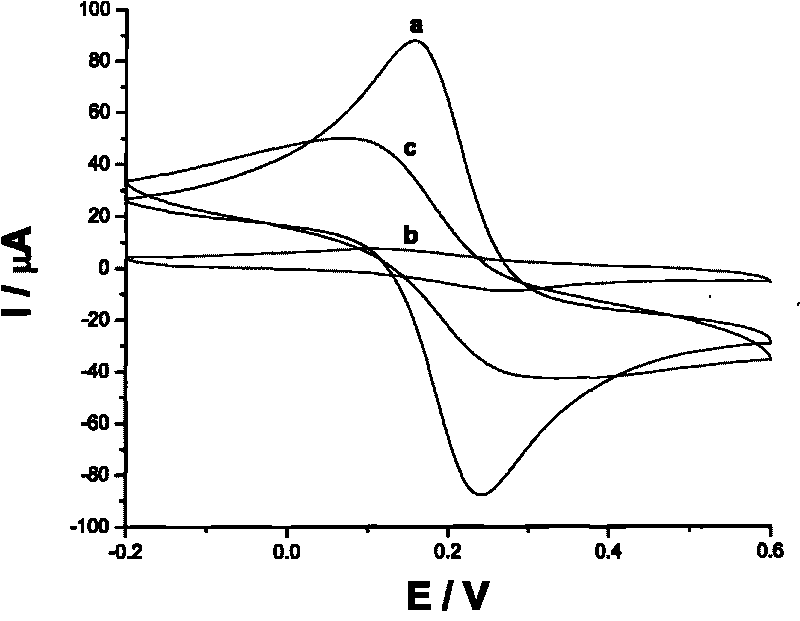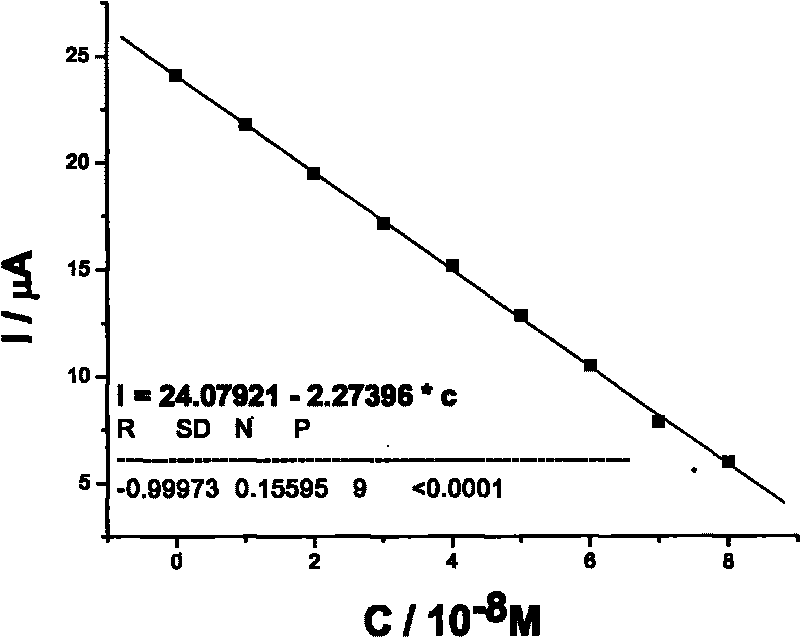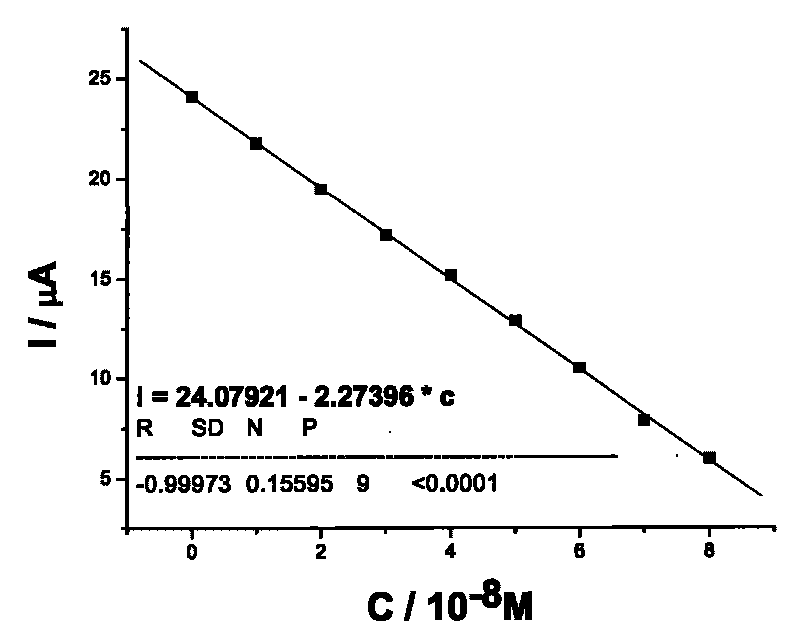Method for determining trace terramycin by utilizing molecularly imprinted immunosensor
An immunosensor and molecular imprinting technology, which is applied in biological testing, material electrochemical variables, material inspection products, etc., can solve problems that have not been reported and achieve high sensitivity
- Summary
- Abstract
- Description
- Claims
- Application Information
AI Technical Summary
Problems solved by technology
Method used
Image
Examples
Embodiment
[0022] 1. Treatment of gold electrodes:
[0023] The gold electrode was polished with 1.0 μm, 0.3 μm and 0.05 μm alumina powder in turn, washed in nitric acid, absolute ethanol, and pure water with a volume ratio of 1:1, and ultrasonically washed for 5 minutes after taking it out.
[0024] 2. Preparation of oxytetracycline molecularly imprinted immunosensor
[0025] Measure 0.5mL 7×10 -4 mol / L catechol, 2.5mL 3×10 -4 mol / L oxytetracycline solution and 7mL acetic acid-sodium acetate buffer solution with a pH=5.2 concentration of 0.1mol / L, stir well and then use cyclic voltammetry at a speed of 50mV / s between 0 and 0.8V By scanning 30 circles continuously, the oxytetracycline molecularly imprinted immunosensor can be prepared.
[0026] 3. Detection method
[0027] Take a 15mL small beaker, add 10mL 0.1mol / L containing 5×10 -4 mol / L hydroquinone in phosphate buffered saline solution. Immerse the oxytetracycline molecularly imprinted immunosensor fully absorbed in the horser...
PUM
 Login to View More
Login to View More Abstract
Description
Claims
Application Information
 Login to View More
Login to View More - R&D
- Intellectual Property
- Life Sciences
- Materials
- Tech Scout
- Unparalleled Data Quality
- Higher Quality Content
- 60% Fewer Hallucinations
Browse by: Latest US Patents, China's latest patents, Technical Efficacy Thesaurus, Application Domain, Technology Topic, Popular Technical Reports.
© 2025 PatSnap. All rights reserved.Legal|Privacy policy|Modern Slavery Act Transparency Statement|Sitemap|About US| Contact US: help@patsnap.com



